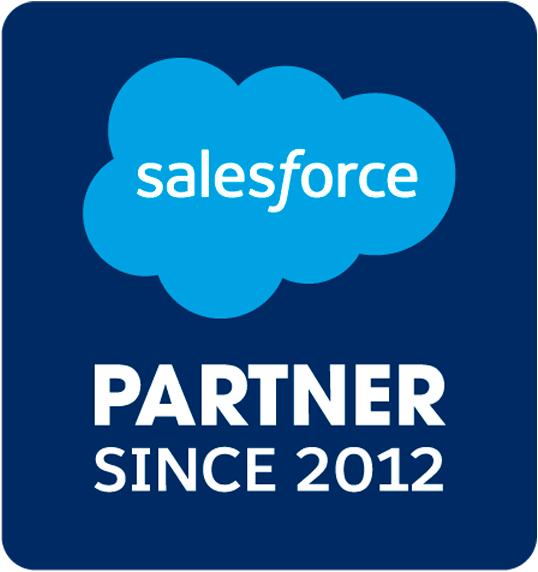“This isn’t the Wild West anymore.”
Our CTO says that all the time about our internal technology. And as a CRM admin, I love the idea behind it. Sure, the Wild West will always capture hearts and minds because of the freedom and independence it inspires, but you know what else the Wild West brings to mind? Stagecoach robberies, gunfights, getting lost in the desert. And even the biggest John Wayne fan wouldn’t want your CRM system looking anything like an old-timey saloon brawl.
All joking aside, your CRM strategy will fail if it operates with all the lawlessness and disorder of the Wild West. As a former consultant, I’ve seen too many companies struggle with their CRM strategy because they never defined the business processes behind it. Here are 3 critical reasons why, and what you can do about it.
{{cta('a7beaa7e-be12-44e5-ae0a-c147f5a83e98')}}
3 reasons why your CRM strategy depends on defined business processes
1. CRM platforms are process-driven tools.
Although many CRM systems are quite flexible, you shouldn’t think of them as blank canvases. No, your CRM was designed to help document and reinforce specific business processes, like converting strangers into qualified leads, turning opportunities into wins or resolving customer issues.
When these processes are well structured, your CRM can make them all more efficient by:
- Establishing the critical stages that each one includes
- Helping users accomplish key tasks at each stage to move the process forward
- Defining the information needed to reach each new step
- Providing quality reporting on these processes to show where your team can improve them
But without this kind of standardized process, every rep will use the CRM differently. Ultimately, that will make your employees
less efficient because they’re using the technology in unintended ways. It also leads to useless reporting because nobody is entering information consistently or thoroughly. Garbage in leads to garbage out.
These problems can cause both employees and management to lose confidence in your CRM — the quickest way to kill any technology.
2. Technology demands order, but humans are messy.
The human brain is unlike any modern machine in its ability to handle ambiguity. We can consider multiple possibilities and shades of gray at once. Technology? Not so much. Tech systems like definite answers: Yes or No, predetermined lists of options. CRMs can automate complex business processes for your teams, but
only if the necessary information is available and formatted in precisely the right way.
So, if you let humans interact with technology however they want, they’ll find ways to break it. Here are some examples:
- The CRM tries to email a contact in the system automatically, but can’t because someone entered the contact’s address in the “Secondary Email” field instead of the primary one
- Your CRM needs to assign a customer to a sales rep based on its state, but can’t find anyone responsible for “Missippi”
- Your CRM automatically creates follow-up tasks for sales reps when they create an opportunity in the system, but one rep only enters opportunities once they’re closed won. The sales rep then complains about continually receiving tasks to follow up on deals s/he’s already won.
So process needs to be the bridge between your users and your CRM, defining how humans should interact with the system. What information is required and when, how it should be formatted and when the CRM will take automated actions. The better you define your process, the more automation you can build into your technology, saving users time and energy. Everyone wins.
3. Process lets you build effective security settings into your CRM strategy.
Let’s go back to the Wild West for a second (grab your 10-gallon hat). Sure it was “free,” but without effective law & order, banditry and crime ran rampant. What could this kind of anarchy look like in your CRM? Information misuse, accidental data loss, noncompliance with required security standards (like
HIPAA), financial & legal penalties.
Without process, it’s impossible to develop adequate security standards. Everyone claims they need access to everything in the system because they’re all responsible for doing everything. But process lets you define roles and handoffs in the system, which then allows you to restrict users’ access to information they’re not responsible for. With process, you can move away from the anarchy and vigilantism of the Wild West and instead to an orderly system where nobody has more power than they need, but enough to do their jobs efficiently.
Bonus: What can you do about it?
If you’re starting fresh with a new CRM, revamping an existing one or even adding functionality to a standing system, it’s critical to define all the processes behind your system
before you build a single thing. Talk to representatives from each user group to understand their current role, their pain points and ideal improvements. Then bring everyone together to build a streamlined process that addresses as many pains as possible. Map it and display it so anyone can reference it in the future. At Torrent, we even design poster visuals of our core internal processes so that our employees can quickly understand the critical steps involved at each stage. Only once you’ve defined your process and made it accessible to future users should you begin work on your CRM, customizing it to mirror and enhance your process at every step.
If all that sounds too difficult to manage in-house, consider bringing in an
implementation partner to help out. Look for one that has experience in business process consulting, not just technological expertise. They’ll be well-equipped to guide your CRM strategy in a way that results in better processes and better technology. Because you should never sacrifice one for the other.
Looking for more CRM strategy tips? Salesforce customers, check out our eBook on how
your Salesforce strategy might be killing user productivity.



